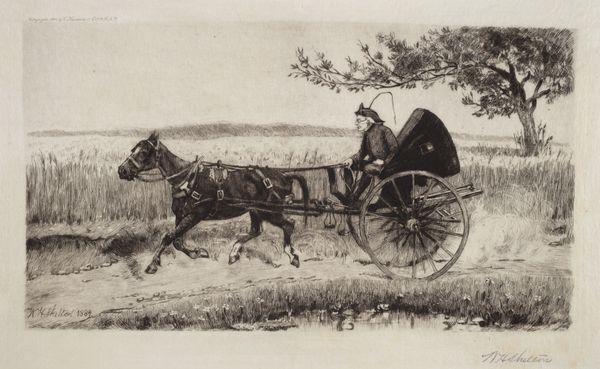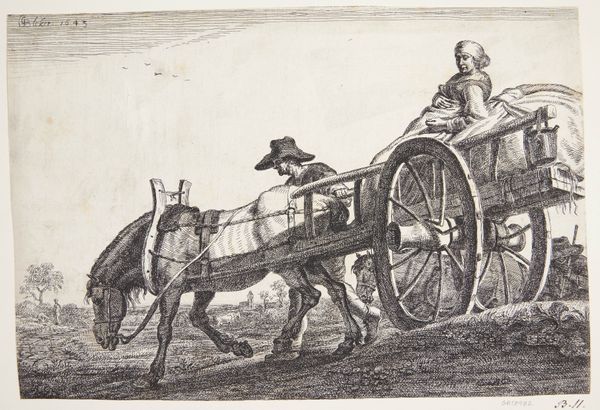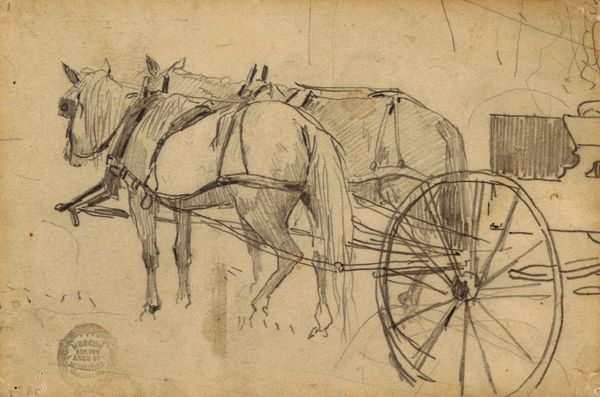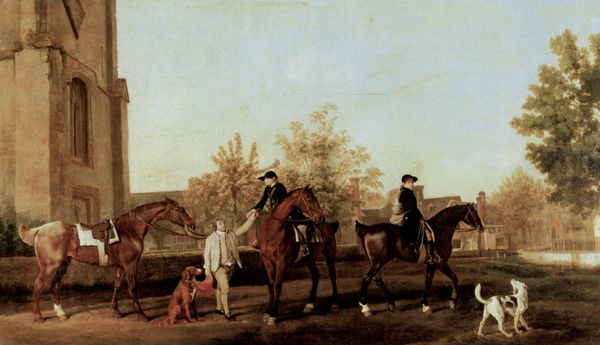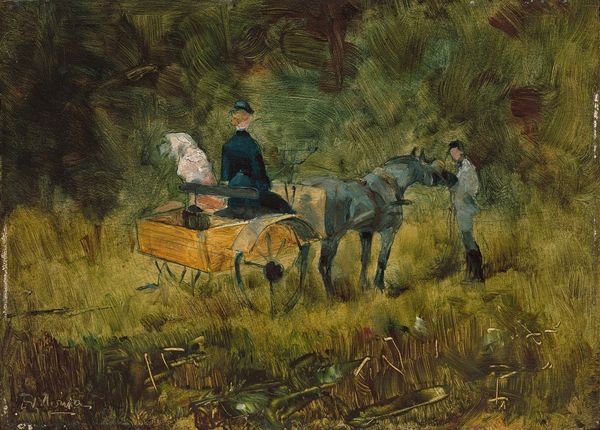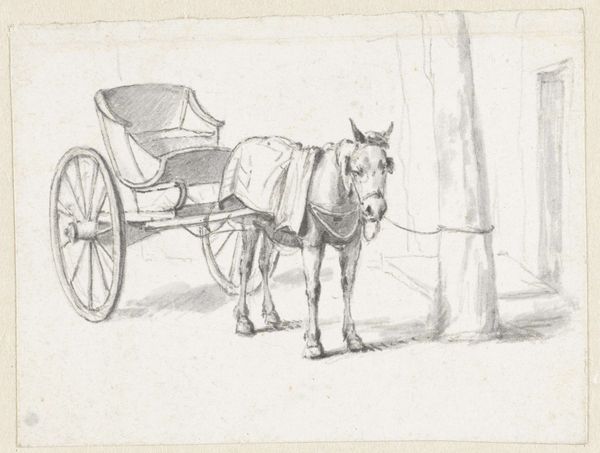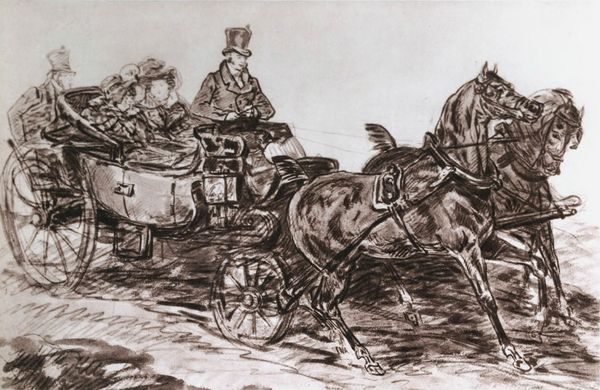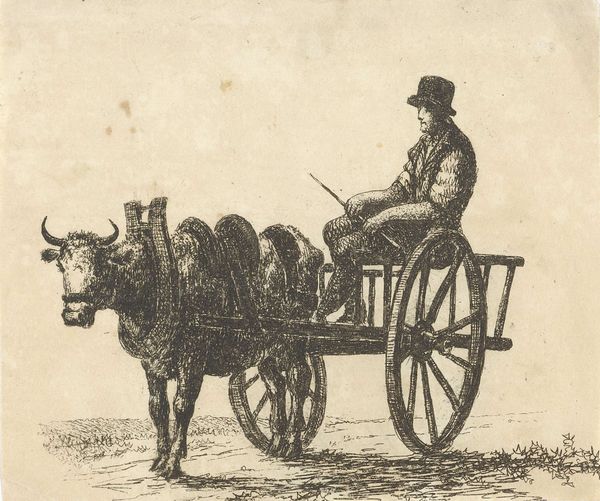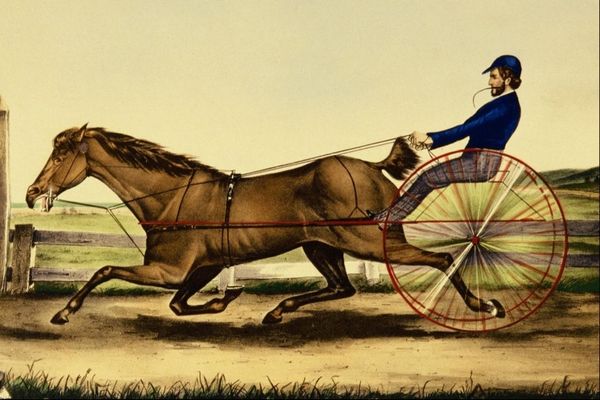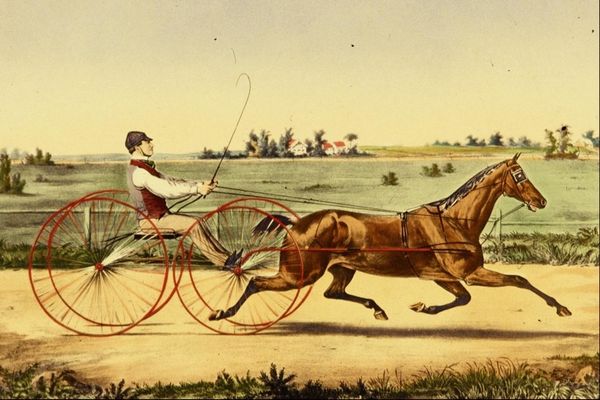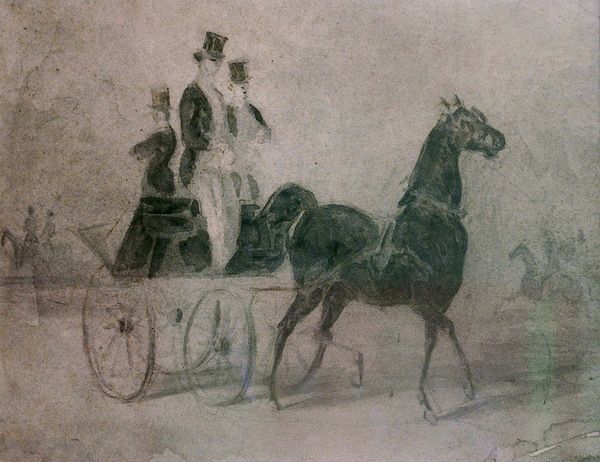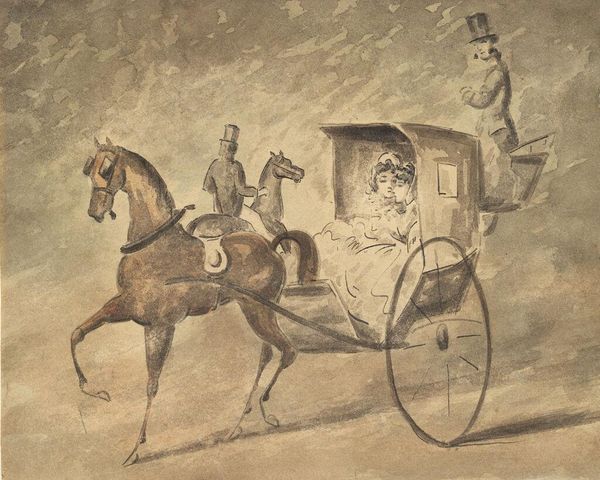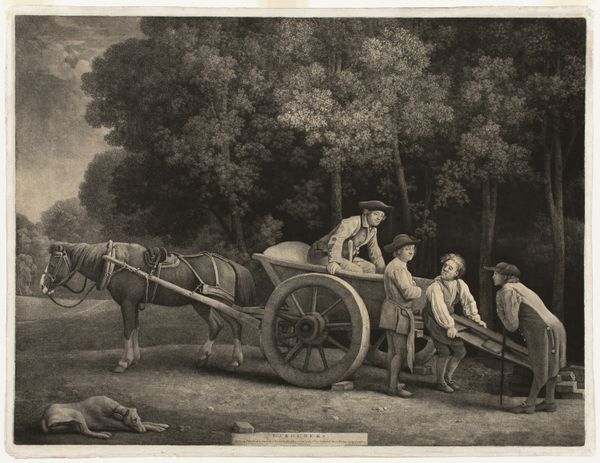
Copyright: Public domain
Curator: Before us, we have Vincent van Gogh's "Donkey and Cart," a charcoal drawing dating back to 1881. Editor: My first impression is the strong sense of stillness. The muted tones of the charcoal create a somber, almost melancholic atmosphere. The texture is quite rich and creates visual interest that rewards close inspection. Curator: Absolutely. This work, completed during his early period, reflects his deep engagement with the working class and rural life. It echoes a wider societal narrative surrounding class, labor and the place of the vulnerable within that structure. Consider how this scene plays into representations of labor within 19th century Dutch culture. Editor: Yes, and structurally, the composition leads the eye directly to the central wheel of the cart, almost a sun around which the rest of the elements rotate. It dominates the space. I'm interested in how Van Gogh used short, broken lines to convey both form and a palpable sense of weight—particularly with the donkey itself. Curator: Precisely. Look at how the donkey's posture reflects themes of toil and social inequity present at that time. What we read is almost an exhaustion within the beast itself – an embodiment of societal expectations and the burdens placed upon the marginalized, reflecting broader socio-political contexts. The presence of the figure atop the cart reminds us about hierarchies and positions of power. Editor: But beyond the immediate thematic interpretation, observe the meticulous rendering of the wheel spokes, and the variations in pressure to render both foreground and distant background space, effectively leading our eye into the depicted locale. I admire the technical skill. Curator: Understanding van Gogh's own positionality within that socio-economic fabric adds crucial nuance, informing us about shared lived experience, yet also revealing a vantage of a witness to these societal structures. How does that knowledge shape the image you see? Editor: His keen eye captures a particular sort of reality, using formal techniques to amplify, more than simply depict, the scene at hand. It resonates with a careful assessment and confident ability in terms of draughtsmanship. It really is an image to get lost in. Curator: Indeed, "Donkey and Cart" reveals van Gogh's social awareness and artistic path as an early document of the lives and labor of everyday folk, but also his growing fascination with form and perspective. Editor: It's a simple yet potent piece—grounded in technical accomplishment while sparking profound reflections.
Comments
No comments
Be the first to comment and join the conversation on the ultimate creative platform.
